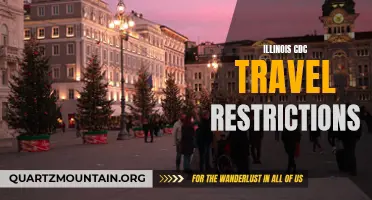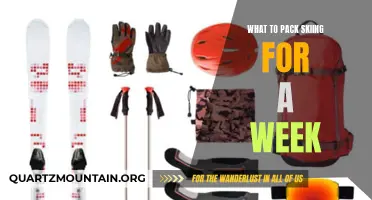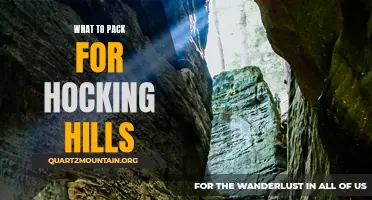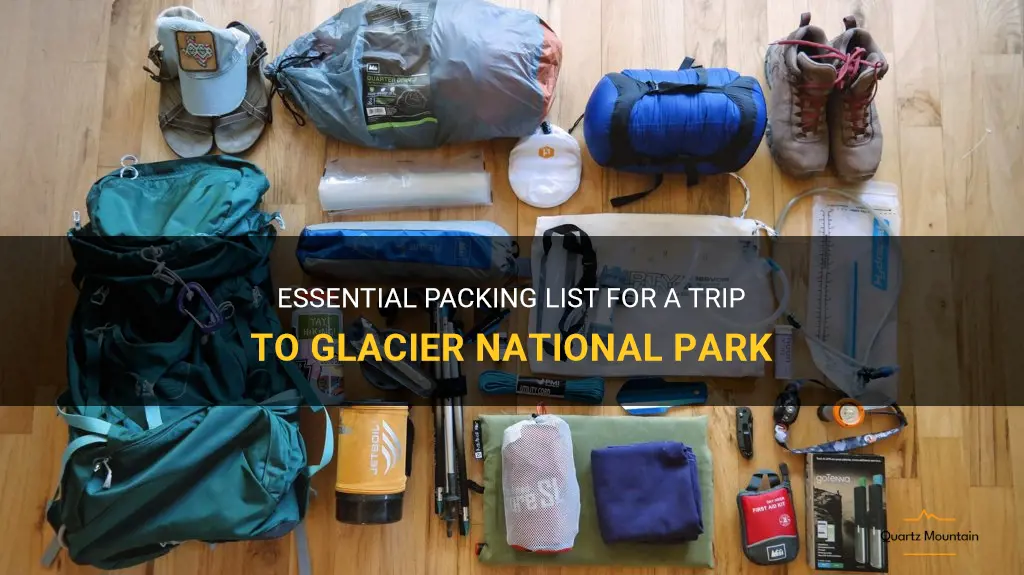
Glacier National Park, nestled in the heart of the Rocky Mountains, is a breathtaking destination for nature lovers and adventure enthusiasts alike. With its towering mountains, crystal-clear lakes, and impressive glaciers, this park offers endless opportunities for exploration and outdoor recreation. However, packing for a trip to Glacier National Park can be a daunting task, as the weather and terrain can be unpredictable. To ensure a comfortable and enjoyable trip, it's essential to have a well-thought-out packing list that includes all the necessary items for this unique wilderness experience. From waterproof gear to bear spray, this article will provide you with the ultimate essential packing list for your trip to Glacier National Park.
| Characteristics | Values |
|---|---|
| Weather | Varies throughout the year, from cold and snowy in winter to mild and sunny in summer |
| Clothing | Layered clothing for changing weather conditions, including warm jackets, waterproof outerwear, and moisture-wicking base layers |
| Footwear | Sturdy, waterproof hiking boots or shoes, and comfortable socks |
| Camping gear | Tent, sleeping bag, camping stove, cooking utensils, and other necessary equipment |
| Food and water | Non-perishable food items, water bottles or hydration packs, water purification system |
| Navigation tools | Maps, compass or GPS device, trail guidebooks |
| Wildlife safety | Bear spray, bear canisters for storing food, and knowledge of how to coexist with wildlife |
| First aid kit | Basic first aid supplies, including bandages, antiseptic, pain relievers, and any necessary medications |
| Safety gear | Flashlight or headlamp, emergency whistle, fire starters, and a multi-tool or knife |
| Recreation items | Binoculars, camera, backpack, trekking poles, and any other outdoor gear or recreational items |
| Personal items | Toiletries, sunscreen, insect repellent, sunglasses, hat, and personal medications |
| Communication | Cell phone, portable charger, and a list of emergency contacts |
What You'll Learn
- What are the essential items to pack for a trip to Glacier National Park?
- Are there any specific clothing or gear recommendations for hiking in Glacier National Park?
- What should I include in my first-aid kit for a trip to Glacier National Park?
- Are there any specific items I should pack for wildlife encounters in Glacier National Park?
- Is there any special gear or equipment needed for camping in Glacier National Park?

What are the essential items to pack for a trip to Glacier National Park?
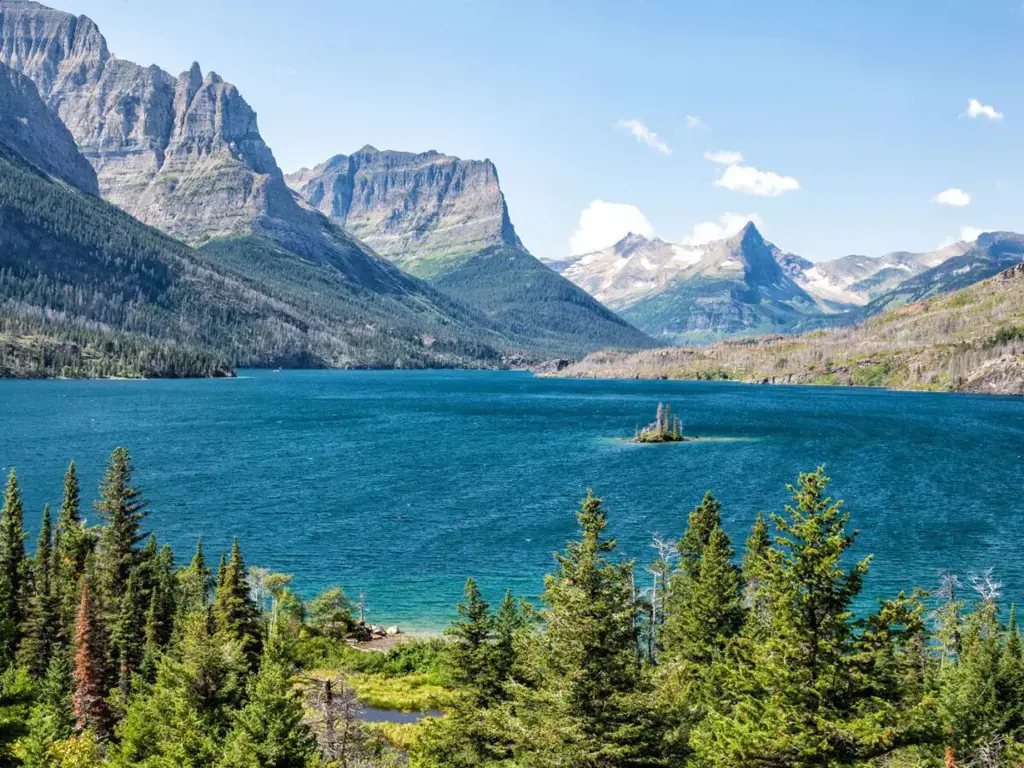
Glacier National Park is a stunning destination known for its majestic mountains, crystal-clear lakes, and diverse wildlife. If you're planning a trip to this beautiful park, it's important to be prepared with essential items to ensure a smooth and enjoyable experience. Here are some key items to pack for your trip to Glacier National Park:
- Clothing: Glacier National Park experiences unpredictable weather, so it's important to pack layers of clothing. Be sure to bring a waterproof jacket, as rain showers can occur throughout the year. You'll also want to pack warm clothing, including sweaters and hats, as temperatures can drop significantly, especially at higher elevations.
- Hiking boots: With over 700 miles of hiking trails, Glacier National Park is a hiker's paradise. It's essential to pack a pair of sturdy hiking boots to protect your feet and provide stability on the trails. Make sure your boots are broken in before your trip to avoid blisters or discomfort during your hikes.
- Backpack: A comfortable backpack is essential for carrying essentials such as water, snacks, a map, and extra layers of clothing. Look for a backpack with adjustable straps and a waist belt for added support and comfort during long hikes.
- Water bottle and water filter: Staying hydrated is crucial while exploring Glacier National Park. Bring a refillable water bottle to minimize waste and pack a water filter or purification tablets to ensure safe drinking water while out on the trails.
- Bear spray: Glacier National Park is home to grizzly bears and black bears, so it's important to be prepared for potential encounters. Bear spray is an essential item to have on hand for self-defense. Make sure to familiarize yourself with how to use bear spray before your trip.
- Sun protection: The sun's rays can be intense at higher elevations, so pack sunscreen with a high SPF, a wide-brimmed hat to protect your face and neck, and sunglasses to protect your eyes from the glare.
- Insect repellent: Mosquitoes and other biting insects can be present in Glacier National Park, especially during the summer months. Pack insect repellent to protect yourself from bites and potential diseases.
- Binoculars and camera: Glacier National Park is known for its wildlife, including bears, moose, elk, and mountain goats. Bring a pair of binoculars to spot wildlife from a distance and a camera to capture your unforgettable moments.
- First aid kit: It's always a good idea to have a basic first aid kit on hand while exploring the park. Include items such as adhesive bandages, antiseptic wipes, pain relievers, and any necessary prescription medications.
- Maps and guidebooks: While Glacier National Park offers cell phone service in some areas, it's always wise to have physical maps and guidebooks as a backup. These resources can provide valuable information about trail difficulty, points of interest, and safety precautions.
Remember to check the park's website or contact the visitor center for any specific recommendations or restrictions before your trip. By packing these essential items, you'll be well-prepared for a memorable and safe adventure in Glacier National Park.
The Ultimate Packing Guide for Backpacking Through Central America
You may want to see also

Are there any specific clothing or gear recommendations for hiking in Glacier National Park?
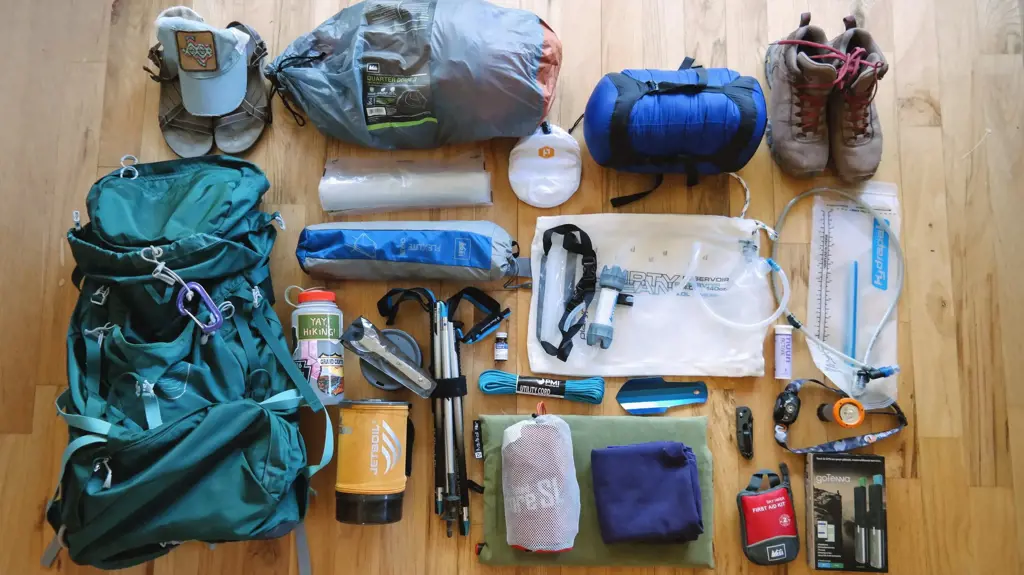
Hiking in Glacier National Park is an incredible experience. However, it's important to be prepared and have the right clothing and gear to ensure a safe and enjoyable trip. In this article, we will discuss some specific recommendations for clothing and gear when hiking in Glacier National Park.
Layering is key:
Glacier National Park is known for its unpredictable weather, so it's essential to dress in layers. Start with a moisture-wicking base layer that will keep you dry and comfortable. Next, add a insulating layer such as a fleece or down jacket to keep you warm. Finally, top it off with a waterproof and breathable outer layer to protect you from rain, snow, and wind.
Waterproof hiking boots:
Invest in a good pair of waterproof hiking boots. Glacier National Park has numerous streams, rivers, and lakes, and you'll likely encounter wet and muddy conditions on the trails. Waterproof boots will keep your feet dry and prevent blisters. Make sure your boots provide good ankle support and have a sturdy sole for traction on uneven terrain.
Hiking socks:
Wearing the right socks can make a big difference in your hiking experience. Look for moisture-wicking and quick-drying socks made from materials like merino wool or synthetic blends. Avoid cotton socks as they retain moisture and can lead to blisters. Also, consider wearing a thin liner sock underneath your hiking socks to further prevent friction and blisters.
Sun protection:
Glacier National Park receives a lot of sunshine, especially during the summer months. Protect yourself from harmful UV rays by wearing a wide-brimmed hat and sunglasses. Additionally, apply sunscreen to any exposed skin, even on cloudy days. Don't forget to bring lip balm with SPF protection as well.
Trekking poles:
Consider using trekking poles for added stability and to relieve stress on your knees and joints. They can be particularly useful on steep or uneven terrain. Make sure to adjust them to the appropriate height for your comfort and grip.
Backpack:
A comfortable and well-fitting backpack is crucial for carrying your essentials. Look for one with padded shoulder straps and a hip belt for proper weight distribution. Choose a backpack with enough capacity to carry water, snacks, extra layers, a first aid kit, and any other gear you may need for your hike.
Water and snacks:
Staying hydrated and fueled during your hike is essential. Carry enough water for the duration of your hike and consider using a hydration bladder, which allows you to drink on the go. Pack snacks that are easy to eat and provide quick energy, such as trail mix, energy bars, and fruit.
Remember, these are just general recommendations and the specific clothing and gear you'll need may vary depending on the time of year and the specific trail you plan on hiking. It's always a good idea to check the weather forecast and trail conditions before heading out, and to consult with park rangers or experienced hikers for additional guidance. With the right clothing and gear, you'll be well-prepared to enjoy all that Glacier National Park has to offer.
Essential Items to Pack for Your Stay at Iberostar Paraiso del Mar
You may want to see also

What should I include in my first-aid kit for a trip to Glacier National Park?
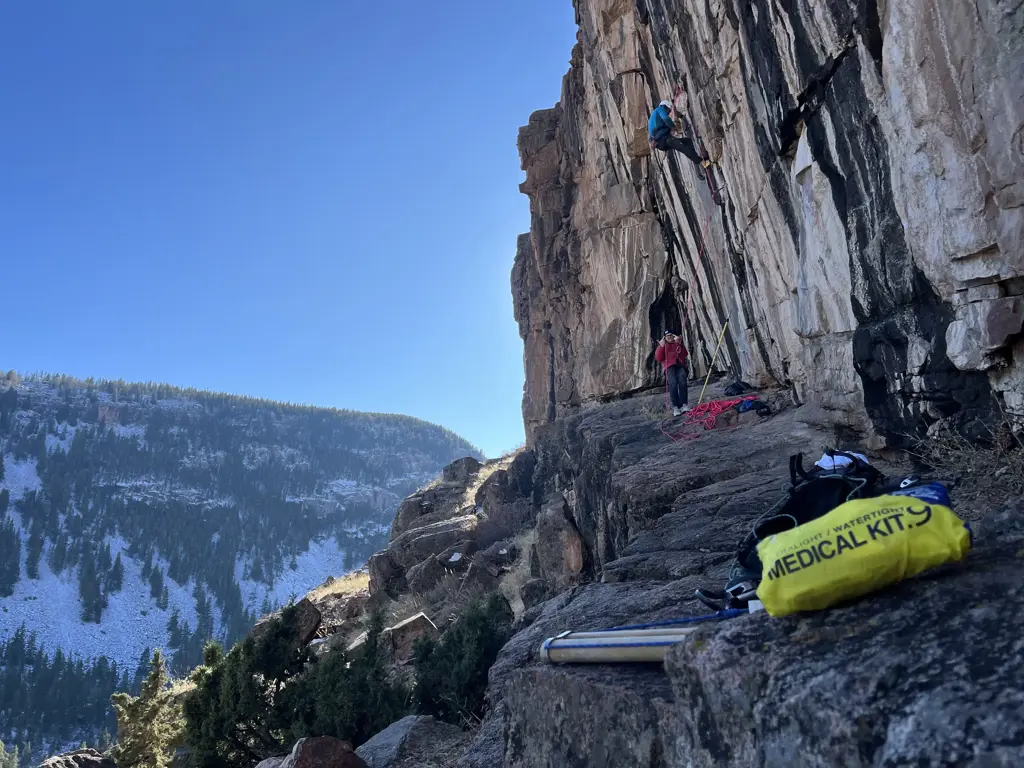
Glacier National Park is a vast and beautiful wilderness area that offers stunning views and a variety of recreational activities. However, it is important to be prepared for emergencies or accidents that may occur during your trip. One essential item to bring with you is a well-stocked first-aid kit. Here are some items that you should include in your first-aid kit for a trip to Glacier National Park.
- Bandages and adhesive tape: These are essential for treating cuts, scrapes, and blisters. Be sure to include a variety of sizes to accommodate different injuries.
- Antiseptic wipes or solution: These can be used to clean wounds and prevent infection. Look for wipes that are individually packaged for convenience.
- Sterile gauze pads and adhesive strips: These can be used to dress larger wounds or provide additional support for bandages.
- Tweezers and small scissors: These are useful for removing splinters, thorns, and other small objects from the skin. Be sure to pack these in a protective case to prevent injury.
- Pain relievers: Ibuprofen or acetaminophen can be helpful for relieving pain and reducing fever. Include both adult and children's versions if necessary.
- Antihistamines: These can be useful for treating allergic reactions to insect bites or plant irritations. Consider both oral tablets and topical creams or ointments.
- Sunscreen: Glacier National Park is known for its high elevation and strong sun. It is important to protect your skin from harmful UV rays. Choose a broad-spectrum sunscreen with a high SPF rating.
- Insect repellent: Mosquitoes and other biting insects can be present in certain areas of the park. Look for an EPA-approved repellent with an active ingredient such as DEET or picaridin.
- Disposable gloves: These are essential for protecting yourself when providing first aid. Pack several pairs in case of multiple injuries or accidents.
- Emergency contact information: Include a list of emergency phone numbers, as well as any specific park emergency services that may be available.
It is also important to familiarize yourself with basic first-aid techniques before your trip. Consider taking a first-aid or wilderness medicine course to gain the necessary knowledge and skills to respond to emergencies in the backcountry.
In addition to a well-stocked first-aid kit, it is wise to carry a map, compass, and other navigational tools, as well as extra food, water, and clothing. These items can help you stay safe and comfortable in the event of an unexpected situation.
Remember, preparation is key when venturing into the wilderness. By packing a comprehensive first-aid kit and equipping yourself with the necessary skills and knowledge, you can enjoy a safe and enjoyable trip to Glacier National Park.
Packing Tips for an Unforgettable Contiki Grand Southern Adventure
You may want to see also

Are there any specific items I should pack for wildlife encounters in Glacier National Park?
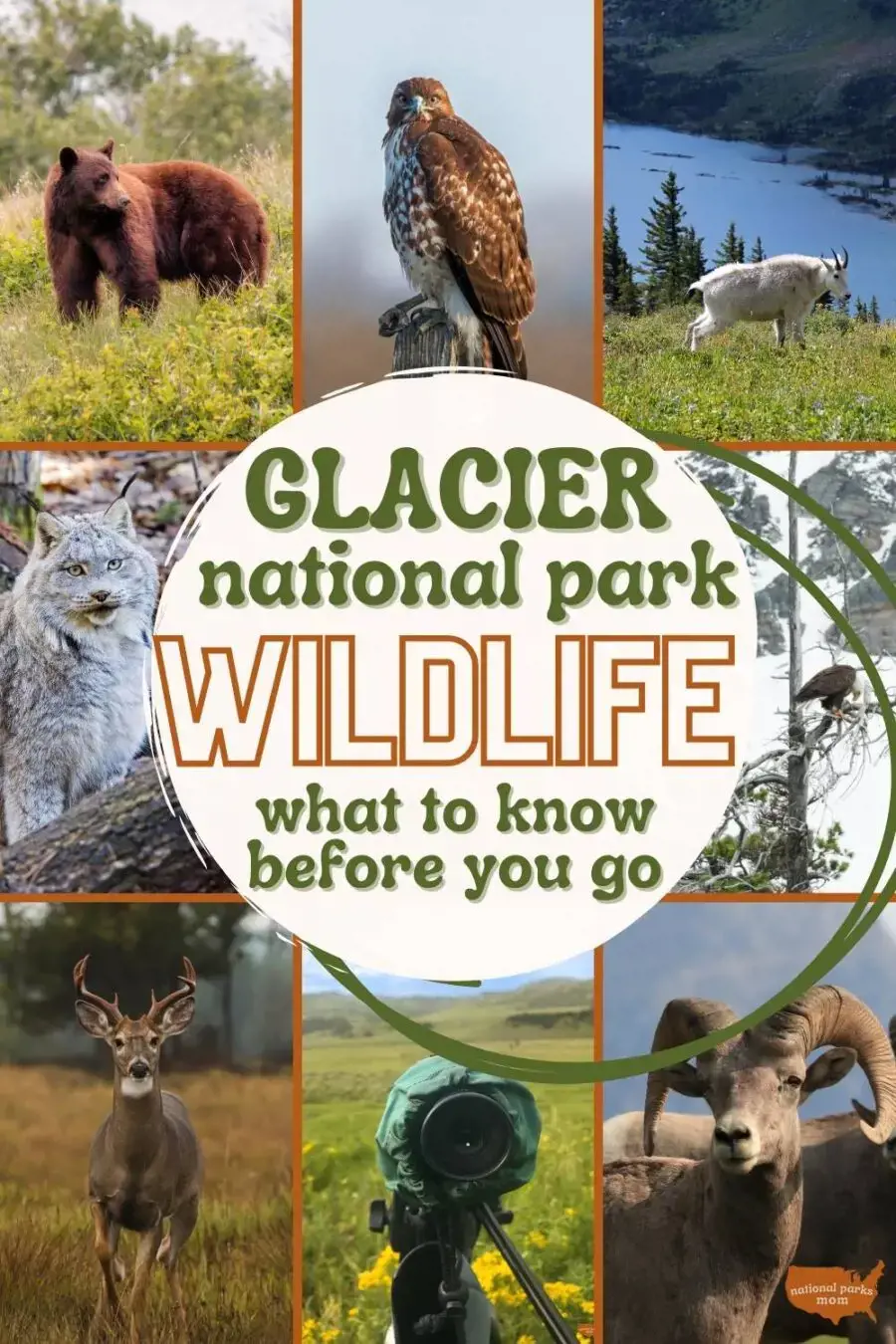
When visiting Glacier National Park, it is important to be prepared for wildlife encounters. The park is home to a diverse array of wildlife, including grizzly bears, black bears, mountain goats, bighorn sheep, and moose. These encounters can be exciting and memorable, but it is essential to prioritize safety and respect for the animals and their natural habitats.
Here are a few items you should consider packing for wildlife encounters in Glacier National Park:
- Bear Spray: Bear spray is an essential item to have with you when exploring the park. It is a form of pepper spray designed specifically to deter bears and other aggressive wildlife. Make sure to learn how to use bear spray properly and keep it easily accessible in case of an encounter.
- Binoculars or a Telephoto Lens: Wildlife can often be seen from a distance, especially animals like mountain goats and bighorn sheep that tend to roam in higher elevations. Packing binoculars or a telephoto lens for your camera will allow you to observe animals from a safe distance without disturbing them.
- Appropriate Clothing: Dressing appropriately for wildlife encounters is crucial. Wear neutral-colored clothing that blends in with the surrounding environment and avoids bright colors that might attract unnecessary attention. Additionally, consider packing layers to accommodate the changing weather conditions. Be prepared for rain, sun, and cold temperatures, as weather in Glacier National Park can be unpredictable.
- Hiking Boots: A sturdy pair of hiking boots is a must when exploring Glacier National Park. They will provide the necessary ankle support and traction for navigating uneven terrain. Moreover, they can help protect your feet from potential hazards and ensure a comfortable hiking experience.
- Bear-Resistant Food Containers: If you plan on backpacking or camping in the park, it is essential to pack bear-resistant food containers. These containers are designed to prevent bears from accessing the food, which helps protect both you and the bears. Always follow park regulations and guidelines regarding storing food and disposing of waste properly.
- Guidebooks or Field Guides: Bringing guidebooks or field guides specific to the wildlife in Glacier National Park can enhance your wildlife encounters. These resources can help you identify different species you may encounter and provide valuable information about their habitat, behavior, and ecological significance.
Remember, the key to any wildlife encounter is to observe from a safe distance and not disturb the animal's behavior or natural habitats. It is crucial to respect their space and refrain from approaching or feeding them. Always follow park guidelines and regulations to ensure the safety of both visitors and wildlife.
By packing these essential items and practicing responsible wildlife viewing, you can have a rewarding and safe experience while exploring Glacier National Park's incredible wildlife.
Essential Items to Pack for a Hitchhiking Adventure
You may want to see also

Is there any special gear or equipment needed for camping in Glacier National Park?
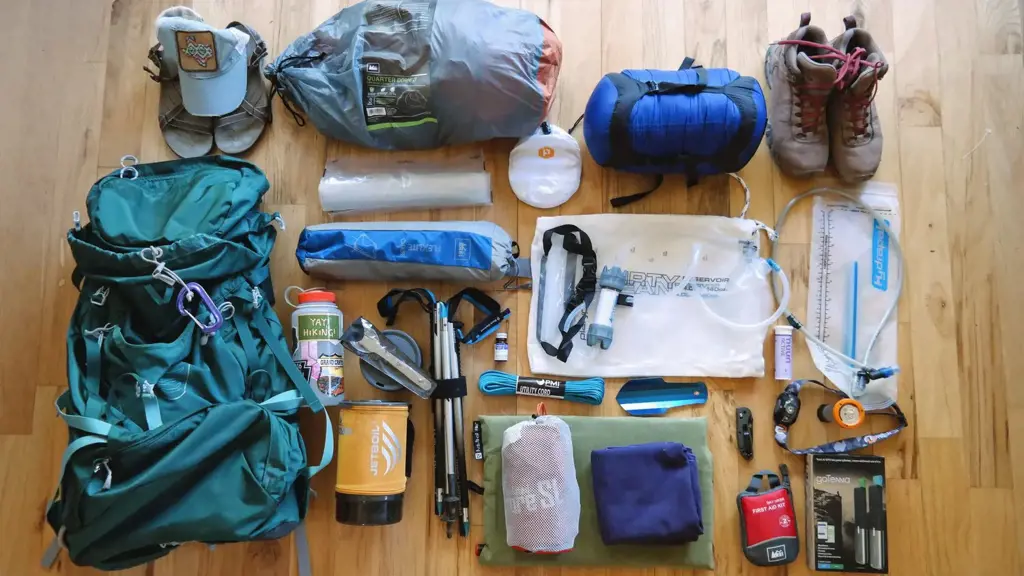
Camping in Glacier National Park can be an incredible experience, but it does require some special gear and equipment to ensure a safe and enjoyable trip. With its rugged terrain, unpredictable weather, and abundant wildlife, it's important to come prepared. Here are some essential items you'll need for camping in Glacier National Park:
- Weather-Appropriate Clothing: Glacier National Park is known for its ever-changing weather conditions. It's important to bring layers of clothing that can be easily adjusted. A waterproof and windproof jacket is a must-have, as well as sturdy hiking boots. Don't forget warm hats, gloves, and thermal socks for cooler temperatures.
- Camping Tent: A good-quality camping tent is essential for a comfortable night's sleep. Choose a tent that is suitable for the number of people in your party and can withstand the park's unpredictable weather. Look for a tent with a rainfly for extra protection against rain and wind.
- Sleeping Bag and Sleeping Pad: Glacier National Park can get quite cold at night, even during the summer months. Invest in a high-quality sleeping bag that is rated for the temperatures you expect to encounter. A sleeping pad will provide insulation from the cold ground and add extra comfort.
- Backpack or Daypack: A sturdy backpack or daypack is essential for carrying your gear while hiking. Look for one with padded shoulder straps and a waist belt for added comfort. Make sure it has enough capacity to carry all your essentials, such as food, water, and extra layers of clothing.
- Bear Spray: Glacier National Park is home to a significant population of grizzly bears. It's crucial to carry bear spray with you at all times while camping or hiking in the park. Make sure you know how to use it properly and keep it easily accessible.
- Camp Stove and Cookware: If you plan on cooking your meals while camping, a camp stove and cookware are essential. Make sure to follow all leave-no-trace principles and use designated fire pits or stoves. Carry a lightweight pot, pan, utensils, and a fuel canister for your stove.
- Water Filtration System: Drinking water from natural sources in Glacier National Park is not advised due to the risk of contamination. Carry a water filtration system or water purification tablets to ensure that you have safe drinking water throughout your trip. Remember to drink plenty of water to stay hydrated, especially at higher elevations.
- First Aid Kit: Accidents can happen while camping, so it's important to have a well-stocked first aid kit on hand. Include essentials such as bandages, gauze, antiseptic wipes, pain relievers, and any necessary prescription medications.
- Maps and Navigation Tools: Glacier National Park offers a vast wilderness to explore, so it's crucial to have maps and navigation tools to help you navigate the trails. Carry a detailed map of the park, a compass, and a GPS device or smartphone app to ensure you stay on track.
- Insect Repellent and Sun Protection: The park is home to a variety of insects, including mosquitos and ticks. Protect yourself from bites and insect-borne diseases by using insect repellent with DEET. Additionally, don't forget to pack sunscreen, sunglasses, and a hat to protect yourself from the sun's harmful rays.
By packing these essential gear and equipment items, you'll be well-prepared for camping in Glacier National Park. Remember to research and plan your trip in advance, and always follow park regulations and safety guidelines to ensure a memorable and safe experience in this stunning natural wonder.
The Essential Packing Guide for a Time Share Vacation
You may want to see also
Frequently asked questions
It is essential to pack layers of clothing for your trip to Glacier National Park, as the weather can be unpredictable. Make sure to bring both lightweight and warm clothing options, such as t-shirts, long-sleeve shirts, sweaters or fleeces, and a waterproof jacket. Additionally, pack comfortable and sturdy walking shoes or hiking boots, as well as hats and gloves for colder temperatures.
While you don't necessarily need any specialized gear, it is recommended to bring a few essential items for hiking in Glacier National Park. These include a good backpack for carrying water, snacks, and any extra layers of clothing. Don't forget to pack a water bottle or hydration bladder, a first aid kit, a map, sunscreen, and insect repellent.
Yes, binoculars can enhance your experience when it comes to wildlife viewing in Glacier National Park. There is a plethora of wildlife to spot, including grizzly bears, mountain goats, and bighorn sheep, and having binoculars will help you see them from a distance without disturbing them. It's worth packing a pair in your gear to maximize your wildlife spotting opportunities.
If you plan on camping in Glacier National Park, there are a few additional items you should pack. These include a tent, sleeping bags, sleeping pads or mattresses, a stove for cooking, and food storage containers. Make sure to follow campground guidelines for storing food to avoid attracting wildlife. It's also a good idea to pack a headlamp or flashlight, as well as extra batteries for any electronic devices.
Yes, there are certain restrictions on what you can bring into Glacier National Park. It is prohibited to bring weapons, fireworks, drones, or other hazardous materials. Additionally, pets must be kept on a leash and are limited to certain areas of the park. It is important to familiarize yourself with the park's regulations and guidelines before your trip to ensure a smooth and enjoyable experience.



